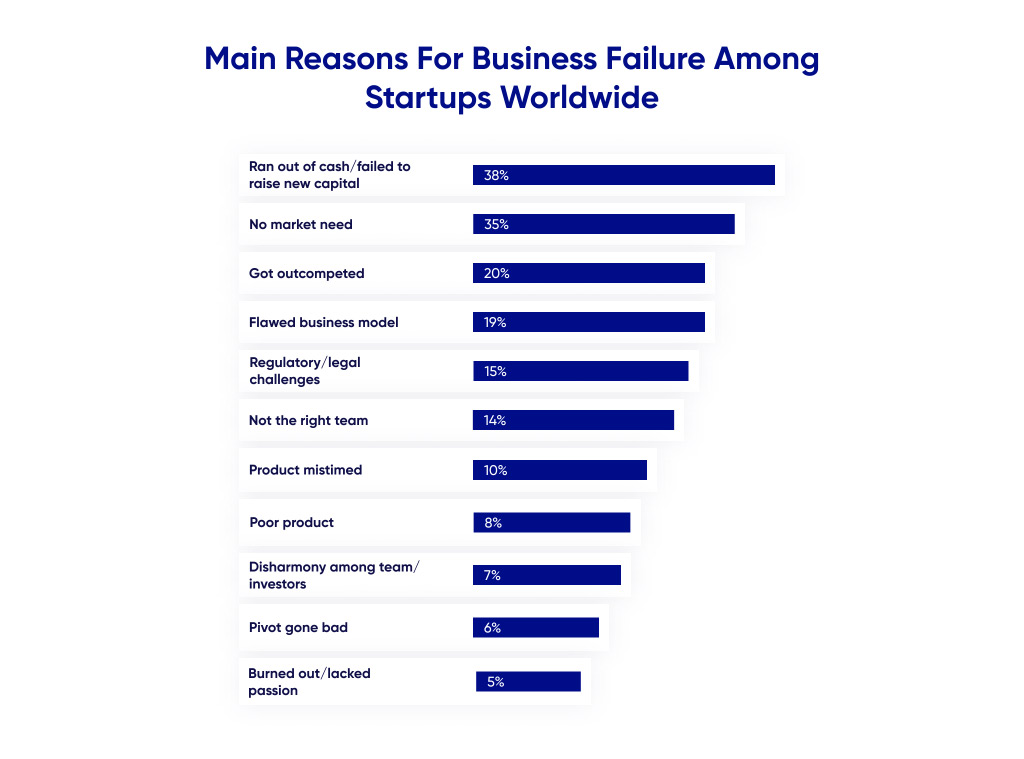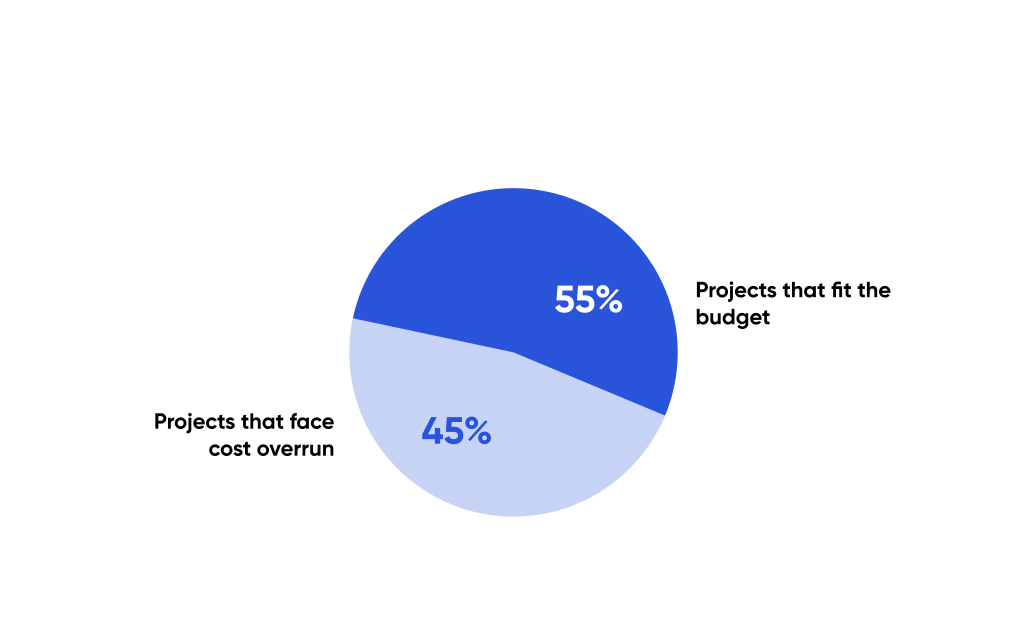One of the greatest misconceptions one may have regarding the software development process is that the coding starts once the contract has been signed. It is possible to throw some documentation at the tech team and expect them to deliver a market-ready solution. And the developers will probably do that. However, the odds are the final product will flop, and all the money spent on it will go down the drain. Luckily, there is a way to significantly increase the chances of a digital product coming out profitable. Introduce project discovery phase.
What Is a Discovery Phase?
The discovery phase is the initial step on the path to the implementation. This is the time for a development team to seek information about the future product and define its goals, scope, and possible restraints that might appear along the way.
The key to a success here is communication and in-depth research. The stakeholders should be prepared to answer various questions the vendor will have and give the available information. Not missing even the slightest detail is an investment in the project’s success and is crucial for preventing the waste of time, money, and other resources.
Contingent upon the scope and the customer’s demands the discovery phase may last for a different period of time. For example, when building a comprehensive web app from scratch, prepare yourself for a longer investigation than while making minor tweaks to existing software. Average timescales of this stage totally depend on the solution’s complexity and are about 20% of the project’s length. However, don’t be alarmed if slight changes to the discovery duration appear.
The number of IT professionals required for the project discovery phase may also vary. A project manager and a BA specialist may be joined by a developer(s), and UI/UX designer. It once again depends on the project’s technicalities, specifics, and the discovery phase goals.
Note! If the business owner doesn’t have well-structured requirements and designs yet, but the certain tech squad is ready to provide them with an exact quote without conducting the discovery phase it shall be a red flag. Once again, it is possible to deliver some kind of a digital product without the extensive research taken prior to development. Yet, in most cases, it will lead to an unsuccessful launch and material/reputational losses.
Why is the Discovery Stage Important?
The significance of a discovery phase of project you’d like to start can be approached from different standpoints. The first one is a “positive” one, a focus on the benefits this stage brings.
- Lower risks due to careful research, reasonable estimations, and a clear vision of the project’s goal.
- Higher ROI as with thorough business analysis an entrepreneur can be sure of the audience’s interest and the product’s relevance.
- Budget savings are secured by a roadmap development. If there is a well-thought-out plan, there won’t be expensive last-minute alterations.
- Timely delivery and no missed deadlines as every development step is calculated.
- Better audience engagement is achieved by creating clever user-friendly UI/UX, which considers users’ preferences and pain points.
Another way to consider the relevance of a project discovery phase is to address all the issues that most probably will appear if the business owner disregards this part of the product creation journey.

- Missed deadlines and/or indefinite development terms will be imminent. If there’s no clear goal, it is impossible to come up with valid requirements and a production timeline.
- Unexpected expenditures for either new features that weren’t included in the initial scope or complex technical solutions for the problems that weren’t foreseen.
- Lack of interest from future buyers. Poor research leads to investing in a digital product using mostly suppositions. This boosts the chances of developing something the end-users will refuse to buy or use. Considering the fact that more than 90% of the startups flop, it should be a major concern.
- Low-grade/mediocre product often seems to be the result of the activities with no discovery phase. It’s typically the outcome of miscommunication or lack of interaction between the IT company and the business owner.
- Lack of alternatives. The development process isn’t cheap by any means and choosing the right tech partner is a sink or swim deal. If the initial stages of the product development were not executed correctly it will be extremely hard to switch to another provider. Most certainly, there will be no proper documentation, which means the new team will be forced to start from scratch.
Key elements of the Discovery Process
Knowing that the discovery phase is not just important, it’s crucial a business owner should keep close track of the process. If any of the key elements are missing, it is a reason to ask the vendor questions or even terminate the cooperation.
- Determining the stakeholders’ expectations, and business objectives
The list of stakeholders is not limited to the ordering customer. It always consolidates everyone who is (or will be) involved in creating or using the solution. The key to success here is not to miss anyone, ensuring all the demands are fully met.
- Requirements elicitation
While managing a project discovery phase, an experienced IT team will ask a customer to share all available information regarding the future solution. It may be user interviews, surveys, reports, social media data, or even technical documentation from the previous IT vendor. No information the business owner is willing to share is irrelevant or meaningless, especially during the planning stage.
- Analyzing the market and the audience
To increase the chances of the product’s future success it is essential to conduct an in-depth market analysis. It should include not only determining the market situation and trends it’s also the competitive analysis and the target audience research.
If done right, this analysis will save the business from several most popular startup failure mistakes like lack of market need or fierce competition.

- Creating a user journey
Theorizing is great, yet during the discovery phase should come a moment when the tech team starts taking actions besides asking questions. One of those is user journey creation. It helps to discover possible problems the user may experience and find and eliminate gaps and bottlenecks in user experience.
- Building the project specification
Software requirements specification is one of the documents a business owner receives once the discovery stage is finished. The document contains all the relevant information about the project, including the product’s concept, scope, general system description, interfaces, possible tech stack, business context, non-functional requirements, and more.
This document describes the outcome in detail. There’ll be a lot of information, still, it is vital to examine the software requirements carefully and eliminate possible ambiguity, loopholes, and mistakes.
- Presenting the project’s strategy and estimation
Another thing tech experts should be able to present in the time of the discovery phase is a consistent development plan describing the workflow by stages. The vendor should also provide information about the suggested team, timeframe, and cost estimation.
How Much Does It Cost?
One of the burning questions for any entrepreneur is a money matter. Anyone who is planning to invest in software would like to know what kind of expenditures to expect and if the project discovery phase is expensive.
Even though it is impossible to name the exact price for this stage, which will be correct for all the projects, there are factors directly influencing the cost.
One of those is project complexity. The more extensive a project is the lengthier a discovery stage will be.
Another factor is the number of experts involved in the discovery phase. Especially considering the fact that one of the most common cooperation models is time & materials.
The pricing model is also important. Light IT Global offers the most beneficial as well as the most transparent type of cooperation — time and materials. It means that the expenses for the project discovery phase will be determined by the hourly rate, the number of hours, and the number of experts working on it.
How Does Light IT Conduct the Discovery Phase?
Specializing in custom end-to-end development Light IT Global focuses on not solely meeting the customer’s needs each time but also on creating effective trust-based cooperation. Throughout the discovery phase, it means full focus on the client’s vision, ideas, suggestions, and expectations.
Every development case is unique. The time and resources required to bring it to life depend on numerous factors like business context, requirements, preferred technologies, and more. Consequently, during the initial steps, the portion of unknowns is the highest. Yet, over time, as more information regarding the project and the client’s expectations is unraveled, this number decreases, allowing the vendor to come up with more exact estimates and predictions. This phenomenon is called the “cone of uncertainty.” Discovery is a sure-fire way to narrow down the cone of uncertainty and provide the customer with more exact estimations (if it’s needed).

Each discovery stage may require a different degree of detail. It fully depends on the specific needs of the client. If one is willing to get the most exact estimation possible, they should be prepared for the discovery to take more time and cost more. However, if the customer prefers the Agile approach and the exact estimation isn’t a must, the discovery will take less time and resources.
Light IT Global always commits to fully meeting the client’s expectations, so the discovery will be different for each project. Still, there are essential stages to this process.
Here’s how it works!
- Create effective communication channels
At Light IT Global, we know that communication is the key. Therefore, the first step during the discovery phase of a project (any project, really) is the communication channels organization.
Depending on the customer’s preferences, it can be daily/weekly calls, emails, video chats, etc. The best work management tool is selected. The check-ins/sync-ups schedule is established. The goal is to make sure the customer receives relevant info regarding the project in a timely fashion and in the most convenient way.
Note! Sync-ups are available for our clients whenever needed.
- Interview the stakeholders
This stage of a project discovery phase may consist of multiple consultations with the stakeholders (business owner, the current tech team, admins, etc.). A business analyst and a project manager find out about the vision stakeholders have, the product’s concept, specifics, and possible unverified assumptions the client may have.
Depending on the customer’s needs, the interview stage may also involve developers (including a team lead or CTO) and a UI/UX expert.
Note! If video or voice interviews are not acceptable the project manager might gather and then send questionnaires to collect the info.
- Requirements elicitation
It’s not always possible for a client to give the vendor access to the relevant info from the get-go. So during this part of the project discovery phase, we gather all the data that might potentially affect the development process and the final result. We’re talking not solely about the extant records or research conducted by the owner. It’s also information about the previous development process (if the solution isn’t developed from scratch), a list of preferred tools (particular tech stack, necessary third-party integrations, etc.), the feedback of the end-users, etc.
Note! Some additional questioning from our experts may appear along the way as this is the time to determine the best way to create a budget-friendly market-driven solution.
- Conduct business processes and market analysis
Once all the accessible information has been collected, Light IT Global analyzes it from a business and tech angle. During the next stages of the discovery phase, it will turn into requirements.
This is the part where we focus on safeguarding the solution’s market success by creating the portrait of an end-user, determining the audience’s expectations and fears, analyzing the current market condition, exploring the competition, and defining whether or not the initial business owner’s assumptions with reference to the product were true/false. The best proof of the value this part of the discovery phase brings is statistics. Lack of business focus and unclear motives are the biggest problems inducing cost overruns.

- Create SRS
Specification arrangement is a peak of a project discovery phase. It is a document that contains all the information about the future solution. The customer will find user journey and roles, a full scope, every feature broken down, suggested technologies, architecture, and more!
Each feature listed on the spec isn’t just carefully described. It contains comments, explanations, illustrations, and other aids to comprehending an implementation.
Note! The specification is approved by the customer at all times. If any points listed in the document appear controversial, Light IT Global is ready for a dialogue.
- Design mockups/wireframes
Precise UI/UX prototype provides the ordering customer with a visual depiction of the essential features of the interface. This is the point in the discovery process where we can make sure that our experts are on the right track and interpret the client’s vision properly.
Among the greatest benefits of wireframes is their ability to highlight possible problems and misunderstandings prior to the development process launch. If there’s a mistake in an existing workflow it will be easily detected on the prototype. Instant fixes at this stage will prevent major losses.
- Assemble the proposal
The document the customer shall receive as a closure of the project discovery phase is a proposal. It includes a thorough workflow plan with time/cost estimations for each feature and stage, a recommended team structure, project milestones, technical suggestions, possible alternatives, and deadlines.
The Project Discovery Checklist
It might be hard for an entrepreneur to measure the value of the discovery phase of project that is about to be developed. To lift that weight off our customers’ shoulders, Light IT Global has developed a handy checklist that will help keep everything under control.
- Is the project’s goal clear?
- Has the scope of a project been defined and agreed upon?
- Have the parties agreed on the methods of measuring the project's success during the discovery phase?
- Have the KPIs been determined?
- Have all the requirements been noted and validated?
- Did the development team consider the customer’s suggestions and expectations?
- Has the client received all the deliverables (specification, mockups, prototypes, etc.)?
- Has the user journey been created?
- Has the IT vendor presented a detailed estimation?
- Has the team structure been set up?
- Has the vendor taken care of the performance monitoring tool?
- Have all the required documents been signed (MSA, SOW, NDA, etc.)?
Note! If you have any questions, second thoughts, or fears, let the vendor know about it. The project discovery phase is successful only if both parties are on the same page regarding every aspect of the future product.
Final Words
A project discovery phase is not the longest stage of the software creation process. Yet, this step can really make or break the whole thing. Light IT Global has been developing custom enterprise software for 16+ years now. Our company takes pride in the customer-oriented approach and always pays extra attention to the client’s ideas and expectations. If you require an experienced IT vendor that can conduct a discovery phase flawlessly, look no further! Contact our experts now and start your journey to a profitable sought-after product today!





